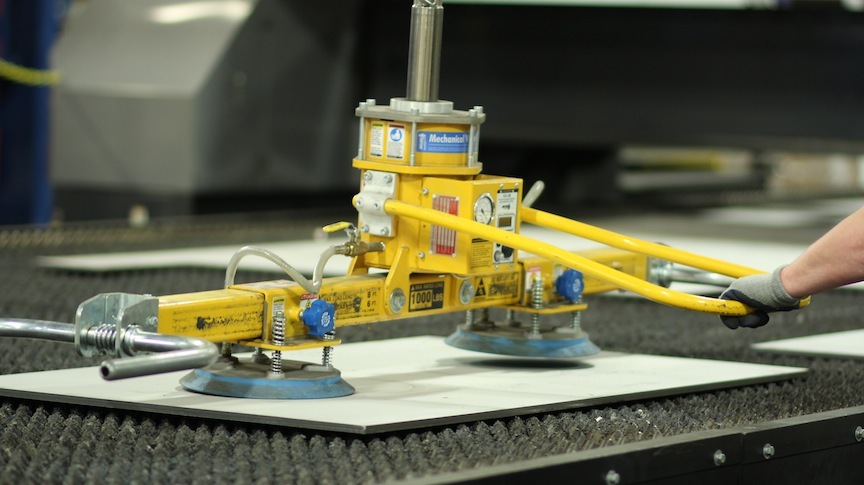Home /
Stainless Steel Plate 309 309S 309H ASTM A240
309, 309S and 309H Stainless Steel Plate Overview

309, 309S and 309H stainless steel plate are chromium-nickel austenitic stainless steel grades that are commonly used in environments with elevated temperatures. Due to their high chromium and nickel content, these grades of stainless steel plate are highly corrosive resistant and have outstanding resistance to oxidation as well as excellent heat resistance. This type of stainless steel also provides excellent strength at room and elevated temperatures. The main difference between 309 and 309S stainless steel lies in the carbon content. 309S contains much less carbon which minimizes carbide precipitation and improves weldability. 309H differs from 309 plate in the amount of carbon as well. 309H contains more carbon than 309, this results in an enhanced creep resistance.
This plate is available for purchase at Penn Stainless Products in plate mill plate, and coil plate. It can be purchased in thicknesses ranging from 0.188” to 1.5”. It is available in coil plate lengths of 96 “, 120”, 144”, but custom lengths are also available per customer request. This type of stainless steel plate is available in plate in plate mill plate in a variety of mill sizes. Contact Penn Stainless Products directly for more information or custom sizes.
Chemical Composition 309, 309S and 309H Stainless Steel Plate
The only chemical difference between 309, 309S and 309H stainless steel plate lies in the carbon content. 309 is comprised of at most 0.20% carbon. 309S is made up of no more than 0.080% carbon and 309H stainless steel is made up of between 0.04% and 0.10% carbon. 309, 309S and 309H all contain 60.0% iron, 23.0% chromium and 14.0% nickel. They also contain 2.0% manganese and 1.0% silicon, 0.045% phosphorous and 0.03% sulfur.
Mechanical Properties of 309, 309S and 309H Stainless Steel Plate
These stainless steel plates have some unique mechanical properties resulting from their chemical composition. The tensile strength of 309, 309S and 309H is at most 85 ksi. The yield strength at 0.2% for this grade stainless steel plate is 30 ksi. The elongation for 309, 309S and 309H is 40%. 309 and 309H plate has a hardness of 217 on the Brinell hardness scale while 309S has a hardens of only 95 on the Brinell scale.
Physical Properties
The density of 309, 309S and 309H stainless steel plate is 0.285 lbm at 68℉ and the thermal conductivity between 32℉ and 212℉ is 9.0 BTU/ft. The electrical resistivity of these plates is 30.7 x 10^-6 at 68℉. They have a module of elasticity of 28.5 x 10^-6 psi. The coefficient of thermal expansion is 8.28 x 10^-6 between 32℉ and 212℉. These types of plate have a specific heat of 0.120 Btu/lb between 68℉ and 212℉. The melting range of 309, 309S and 309H stainless steel plate is between 2500℉ and 2590℉.
Specifications
| 309 | 309S | 309H |
|---|---|---|
| UNS S30900 | UNS S30908 | UNS S30909 |
| ASTM A240 | ASTM A240 | ASTM A240 |
| ASTM A480 | ASTM A480 | ASTM A480 |
| ASME SA240 | ASME SA240 | ASME SA240 |
| AMS 5523 | AMS 5523 | AMS 5523 |
Applications and Uses
This stainless steel plate has a wide range of uses in many industries. It is commonly used in the production of boiler baffles, furnace components, oven linings and fire box sheets. Because of its chemical composition, 309, 309S and 309H stainless steel plate are frequently used in environments that endure high heat, it can be found in waste treatment facilities specifically in things such as incinerators, rotary kilns and calciners. These grades of stainless steel are also useful in paper mill equipment as well as in petroleum refining, catalytic recovery systems and recuperates. Power generation is another area in which this stainless steel plate is very useful. It can be utilized in pulverized coal burners and tube hangers. It is also utilized on fluidized bed furnaces, mainly in grids, piping, and wind boxes. Thermal processing including annealing covers and boxes, burner, grids doors, fans, lead pans, neutral salt pots, muffles, retorts and walking beams are very commonly made of or contain this stainless steel plate. This type of plate has many applications in which high temperatures need to be endured. This type of plate is also found in oven and stove parts and heavily utilized in the chemical and pharmaceutical industry. Due to its chemical composition, this stainless steel plate has a wide variety of uses in the higher temperature range.
Stainless Steel Plate Processing and Fabrication Options
- Plasma cutting
- Plate saw cutting
- Shearing
- Laser cutting
- Waterjet cutting
- Forming
- Welding
- Machining
- Plate leveling